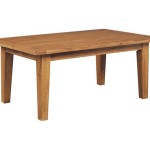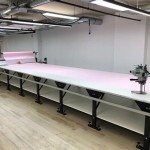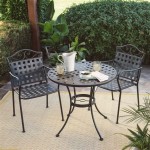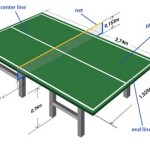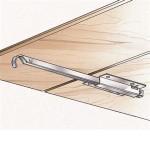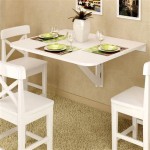What Is The Best Finish For A Table Top Wood?
Choosing the optimal finish for a wooden table top involves understanding the interplay between aesthetics, durability, and maintenance requirements. The "best" finish is subjective, as it depends entirely on the type of wood, the intended use of the table, the desired appearance, and the level of protection required. This article explores various wood finishes, highlighting their characteristics, advantages, and disadvantages to help readers make an informed decision.
Wood finishes serve several crucial purposes. Firstly, they enhance the natural beauty of the wood by bringing out its grain and color. Secondly, they provide a protective barrier against everyday wear and tear, including scratches, stains, moisture, and UV damage. Thirdly, they contribute to the longevity of the table top, preserving its structural integrity and appearance for years to come.
Understanding Different Types of Wood Finishes
Wood finishes can be broadly categorized into two main types: penetrating finishes and surface finishes. Penetrating finishes, such as oil and wax, soak into the wood fibers, enhancing the grain and providing a natural, matte appearance. Surface finishes, such as varnish, lacquer, and polyurethane, form a protective layer on top of the wood, offering greater durability and resistance to moisture and chemicals.
Oil Finishes: Oil finishes, traditionally using linseed oil or tung oil, penetrate the wood, hardening over time and bringing out its natural warmth and character. They are easy to apply and repair, making them a popular choice for DIY projects and antique restoration. However, oil finishes offer limited protection against scratches and water damage, requiring regular maintenance and reapplication.
Wax Finishes: Wax finishes, often used in conjunction with oil finishes, provide a soft, lustrous sheen and enhance the tactile feel of the wood. They offer minimal protection and are primarily aesthetic, requiring frequent reapplication to maintain their appearance and effectiveness. Wax finishes are vulnerable to heat and moisture and are generally not suitable for table tops that will experience heavy use or exposure to liquids.
Varnish: Varnish is a durable surface finish that provides excellent protection against scratches, water, and chemicals. It is available in various sheens, from matte to high gloss, allowing for customization of the final appearance. Varnish can be applied by brush, spray, or wiping, and typically requires multiple coats for optimal protection. However, varnish can be prone to chipping and cracking over time and may require professional refinishing if damaged.
Lacquer: Lacquer is a fast-drying surface finish that provides a hard, durable, and glossy finish. It is commonly used in furniture manufacturing due to its speed of application and excellent resistance to solvents and chemicals. Lacquer is typically sprayed on, requiring specialized equipment and a well-ventilated work area. It is also more brittle than other finishes and can be susceptible to cracking and yellowing over time.
Polyurethane: Polyurethane is a synthetic resin finish that provides exceptional durability and resistance to scratches, water, and chemicals. It is available in both oil-based and water-based formulations, with water-based polyurethane being more environmentally friendly and emitting fewer VOCs (volatile organic compounds). Polyurethane is a popular choice for table tops due to its ease of application, durability, and relatively low cost. However, it can create a plastic-like appearance and may not highlight the natural beauty of the wood as effectively as other finishes.
Shellac: Shellac is a natural resin finish derived from the secretions of the lac beetle. It provides a warm, amber glow and is easy to apply and repair. Shellac is a popular choice for antique restoration and delicate wood projects. However, it is susceptible to water damage and alcohol spills and is not as durable as other surface finishes, making it less suitable for table tops that will experience heavy use or exposure to liquids.
Factors Influencing the Choice of Finish
Selecting the appropriate finish for a table top involves considering several critical factors. These factors include the species of wood, the intended use of the table, the desired appearance, and the level of maintenance the owner is willing to undertake.
Wood Species: Different wood species have varying levels of porosity, hardness, and natural oils, which can affect how they absorb and react to different finishes. For instance, hardwoods like oak and maple are generally more durable and resistant to scratches than softwoods like pine and cedar. Open-grained woods like oak may require a grain filler to achieve a smooth, even surface finish. Oily woods like teak may require special preparation to ensure proper adhesion of the finish.
Intended Use: The intended use of the table top is a primary determinant of the required level of protection. A dining table, which is likely to be exposed to spills, heat, and regular use, requires a more durable finish, such as polyurethane or varnish. A decorative coffee table, on the other hand, may only require a less durable finish like oil or wax.
Desired Appearance: The desired appearance of the table top is a matter of personal preference, but it should also be considered in relation to the overall style of the room and the type of wood being used. A natural, matte finish may be preferred for rustic or modern designs, while a glossy finish may be preferred for more formal or traditional settings. The choice of finish can also affect the color and grain of the wood, so it is important to test the finish on a sample piece before applying it to the entire table top.
Maintenance Requirements: All wood finishes require some level of maintenance to preserve their appearance and protect the wood. Oil and wax finishes require regular reapplication to maintain their protective properties. Surface finishes like varnish and polyurethane may require occasional cleaning and polishing. The amount of time and effort the owner is willing to invest in maintenance should be considered when selecting a finish.
Application Techniques and Best Practices
The success of any wood finish depends not only on the quality of the product but also on the application technique. Proper preparation, careful application, and adequate drying time are essential for achieving a professional-looking and durable finish.
Surface Preparation: Thorough surface preparation is critical for ensuring proper adhesion and a smooth, even finish. The wood should be sanded smooth, starting with a coarse grit sandpaper (e.g., 80-grit) and gradually progressing to a finer grit (e.g., 220-grit). All dust and debris should be removed with a tack cloth or vacuum cleaner. Any imperfections, such as dents or scratches, should be repaired before applying the finish.
Application Methods: Wood finishes can be applied by brush, spray, or wiping, depending on the type of finish and the desired effect. Brushing is a traditional method that is suitable for most finishes, but it requires practice to avoid brush marks. Spraying provides a smooth, even finish but requires specialized equipment and a well-ventilated work area. Wiping is a simple and forgiving method that is ideal for oil and wax finishes.
Number of Coats: Most wood finishes require multiple coats for optimal protection and appearance. The number of coats will vary depending on the type of finish and the desired level of protection. Always follow the manufacturer's instructions regarding the recommended number of coats and drying time between coats.
Drying Time: Adequate drying time is essential for allowing the finish to cure properly and achieve its full durability. Follow the manufacturer's instructions regarding drying time between coats and before putting the table top into use. Avoid placing objects on the table top during the drying period, as this can cause indentations or imperfections in the finish.
In summary, the ideal finish for a wooden table top isn't a one-size-fits-all solution. It requires thoughtful consideration of the wood species, intended function of the table, aesthetic preferences, and the desired level of protection and maintenance. Careful evaluation of these factors enables selecting the most appropriate finish to enhance the table's beauty and ensure its longevity.

Best Tabletop Finish Finewoodworking

Bar Tops And Restaurant Tables What S The Best Finish To Use Popular Woodworking

Best Way To Finish A Tabletop Bailey Line Life 14

Best Finish For Kitchen Table In 2025

What Is A Solid Wood Finish Which Best For Your Desk Table Top Tops

Best Finish For Oak Table Top 7 Picks 2025 Only Furniture

What Is The Best Sealant For A Bar Top

The Best Wood For A Kitchen Table Is Not What You Think

Refinish A Wood Dining Table

The Top Wood Finish Trends For 2024


